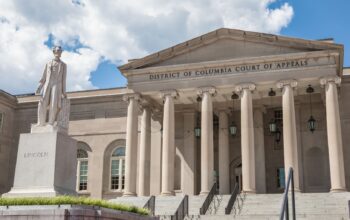by
While cable news pundits and national newspapers often fixate on urban dysfunction, two Black mayors are delivering measurable, record-breaking progress in public safety.
Baltimore Mayor Brandon Scott (D) and Birmingham Mayor Randall Woodfin (D) have overseen some of the steepest reductions in violent crime their cities have experienced in decades.
Baltimore, long branded one of America’s most dangerous cities, released midyear crime data showing a 22% drop in homicides compared to the same period last year. Nonfatal shootings are down 19%, and juvenile homicide victims have declined by an astonishing 71%. Police are solving more crimes, with a homicide clearance rate of 64% and a nonfatal shooting clearance rate 20 percentage points above the 10-year average.
“These historic lows are the result of a comprehensive, evidence-based public safety strategy that we have implemented in partnership with residents,” Mayor Scott said. “But our work is far from over — 68 lives lost to violence is 68 too many.”
The progress didn’t happen by chance. Under Scott’s leadership, the Baltimore Police Department has combined targeted enforcement with offers of help.
Commissioner Richard Worley described how the Group Violence Reduction Strategy works.
“We go out and give them a letter and basically say, ‘Listen, we know you were doing the shooting,’” Worley stated. “We want you to put the guns down, or we will take you and your entire drug operation off the street. But here are the services—job training, education, relocation.’”
Meanwhile, in Birmingham, Mayor Woodfin has led an aggressive, community-driven approach that’s paid off. The city’s homicide rate has fallen 52% compared to last year. Further, the clearance rate for homicides has surged to 79%, a level rarely seen in major cities.
“The Birmingham Police Department is extremely aggressive in what they’re doing and how they’re taking a different approach in policing our community,” Woodfin said.
He credited a blend of new technology, such as the Real-Time Crime Center, and grassroots cooperation.
“When you share information, it doesn’t allow the criminal element to be emboldened and hide behind fear of people,” Woodfin explained. “Those who are killing people are not just walking our streets.”
Birmingham Police Chief Michael Pickett said the city’s street outreach teams are also preventing retaliatory shootings before they happen.
“We are really, really hammering at it,” Pickett told the City Council. “I am very appreciative of all the men and women in the Birmingham Police Department who are leading our fight.”
While total violent crime in Birmingham has edged up slightly, the plunge in homicides shows that sustained focus and coordination can work—even if major media don’t bother to cover it.
State and federal partners in Maryland are also acknowledging Baltimore’s progress.
“Baltimore City released a midyear report showing the fewest homicides ever recorded at this point in a single year,” Maryland Gov. Wes Moore’s office said in a statement.
In both cities, the results are undeniable: fewer families burying loved ones, more cases solved, and more residents willing to engage with police. But to hear much of the national narrative, you’d never know it.
As several social media users noted, in Baltimore and Birmingham, Black leadership is not a box to check or a headline to boast about. It’s what drives real, life-saving change—whether the national media notices or not.
“While we acknowledge the historic lows we are experiencing, we must simultaneously acknowledge that there is much more work to do,” Scott stated. “And our success makes me commit even further to doing it.”
Source: Published without changes from Washington Informer Newspaper




